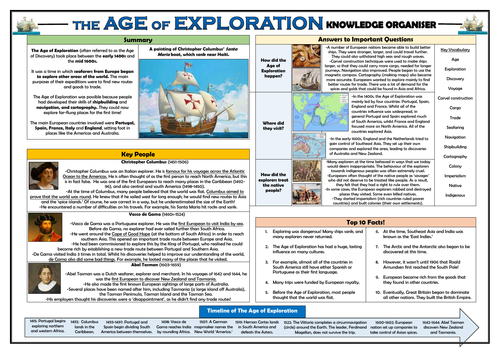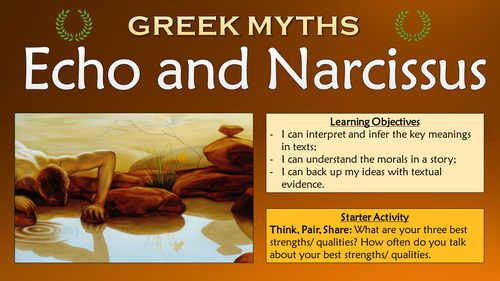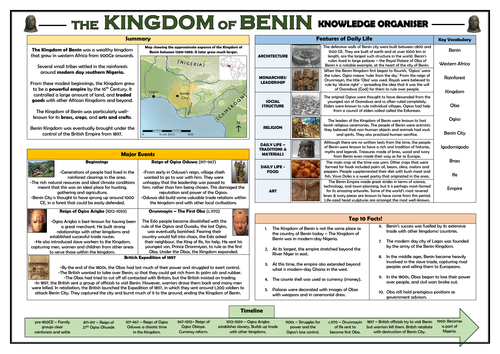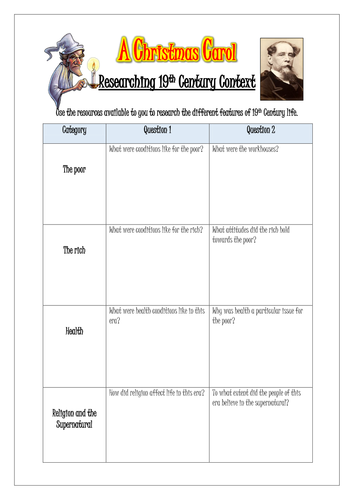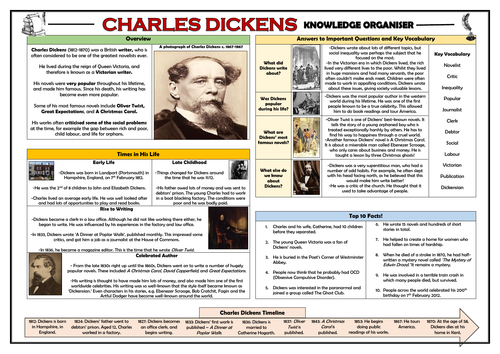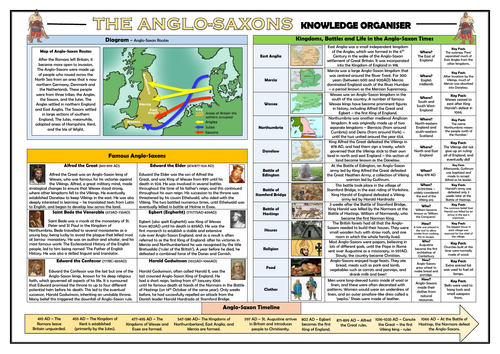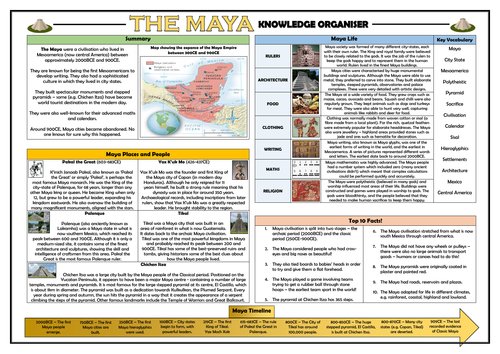
3k+Uploads
1896k+Views
2230k+Downloads
History

The Diary of Anne Frank - Anne's Use of Language
This engaging and informative lesson helps students to demonstrate a clear understanding of the descriptive language used by Anne Frank in her ‘Diary of a Young Girl.’ Students explore how Anne uses techniques such as varied vocabulary, personification, and metaphors to describe scenes and events to the audience. Students also have a go at using their own imaginative language devices through their own diary entries.
The lesson follows a step-by-step learning journey, in which children learn through:
-Completing a card-sorting activity to define and exemplify each of the descriptive devices;
- Reading and understanding extracts from a section of Anne Frank's Diary, in which Anne describes her fear during a bombing, and her anger with her fellow annex inhabitants;
- Identifying and analysing Anne's use of language devices throughout the extract;
- Writing their own language device-filled diary attempts, with support from a helpsheet and a model example;
- Self assessing their own learning attempts.
Included is:
- Whole lesson PowerPoint - colourful and comprehensive;
- Anne's Language Devices Worksheet (and answer sheet);
- Selected extracts - The Diary of Anne Frank;
- Cards for sorting activity;
- Writing to Describe Helpsheet;
- Comprehensive lesson plan.
There are also opportunities for group learning, speaking and listening, peer assessment, and whole class discussion. I originally used these resources with a mixed-ability year 8 class, however colleagues have used them for between years 5 and 9 with minimal adaptations.
All images are licensed for commercial use, and image rights are listed on the last page of the presentation.

Stone Age Britain - Non-Fiction Whole Class Reading Session!
This whole class reading session aims to develop children’s comprehension skills through a reading of a non-fiction text about Stone Age Britain.
The resource pack includes the full text and all of the activities for the session, which the class are guided through via a comprehensive PowerPoint presentation. The reading is followed by a series of activities aiming to develop children’s retrieval, explanation, inference, prediction and summarising skills. It also contains a vocabulary check immediately after the extract is read to clarify any unfamiliar/ difficult language.
The tasks are comprised of quick-check questions, solo thinking, pair/ group discussions and deeper thinking activities.
The session is best suited for children in lower KS2, although with minor adaptations it could feasibly be used with slightly older or younger year groups. This resource is suitable for home/ remote learning. These resources are also suitable for home/ remote learning.

Ancient Greek Clay Pottery - Knowledge Organiser!
This clear, detailed and visually-appealing resource offers a complete reference point for students learning about Ancient Greek Clay Pottery as a part of their art and design study. This was originally used alongside a history study of the Ancient Greeks.
It contains comprehensive sections on:
-Overview;
-Styles and Techniques;
-Significant Places/ Artists;
-Creative Ideas and Examples;
-Key Vocabulary;
-Timeline of Ancient Greek Clay Pottery.
This resource can be adapted for all ages, but was originally designed for KS2 children.
The resource is designed to be printed onto A3, and is provided as both a PDF and a Word version (so that you can edit if you want to). All images used are licensed for commercial use and are cited on a separate document (included).

Buzz Aldrin Knowledge Organiser!
This clear, detailed and visually-appealing resource offers a complete reference point for children learning about Buzz Aldrin, particularly those studying ‘Significant People’ in history, or learning more about space travel in science. It contains comprehensive sections entitled:
Overview;
Times in His Life;
Important Vocabulary;
Buzz Aldrin Timeline;
Answers to the Important Questions;
Top Ten Facts.
The resource is designed to be printed onto A3, and is provided as both a PDF and a Word version (so that you can edit if you want to). All images used are licensed for commercial use.

The Age of Exploration - Knowledge Organiser!
This clear, detailed and visually-appealing resource offers a complete reference point for students learning or revising knowledge relating to the The Age of Exploration (sometimes known as The Age of Discovery). It contains comprehensive sections on:
The Age of Exploration Overview;
Overview;
Key People (Christopher Columbus, Vasco de Gama, Abel Tasman);
The Age of Exploration Timeline;
Answers to the Important Questions;
Key Vocabulary;
Top Ten Facts.
The resource is designed to be printed onto A3, and is provided as both a PDF and a Word version (so that you can edit if you want to). All images used are licensed for commercial use and are cited on a separate document (included). It is most suitable for students in KS2/ lower KS3. Another version of this organiser is available for younger children.

Elizabeth Fry Knowledge Organiser!
This clear, detailed and visually-appealing resource offers a complete reference point for children learning about Elizabeth Fry. It is particularly useful for those completing a history study of ‘Significant Individuals.’ It contains comprehensive sections entitled:
Overview;
Times in Her Life;
Important Vocabulary;
Elizabeth Fry Timeline;
Answers to the Important Questions;
Top Ten Facts.
The resource is designed to be printed onto A3, and is provided as both a PDF and a Word version (so that you can edit if you want to). All images used are licensed for commercial use.

Aztec Sacrifice - Whole Class Reading Session!
This whole class reading session aims to develop children’s fluency and comprehension skills through reading a key extract from Fiona McDonald’s ‘You Wouldn’t Want to be an Aztec Sacrifice!’
The reading is followed by a series of activities aiming to develop children’s VIPERS skills: vocabulary, inference, prediction, explanation, retrieval, sequencing and summarising. It also contains a vocabulary check immediately after the extract is read to clarify any unfamiliar/ difficult language.
The tasks are comprised of quick-check questions, solo thinking, pair/ group discussions and deeper thinking activities. The extract needed is provided as a PDF and a link to a web-based version is also included on the first slide.
The session is best suited for children in KS2, although with minor adaptations it could feasibly be used with slightly younger and older age groups.
Bundle Sale

KS1 Significant Individuals - Activists - Knowledge Organisers Bundle!
These clear, detailed and visually-appealing resources offer a complete reference point for children learning about activists, as a part of their study of ‘Significant Individuals.’ Included in this bundle are knowledge organisers about:
Martin Luther King;
Emmeline Pankhurst;
Nelson Mandela;
Guy Fawkes.
Each knowledge organiser contains comprehensive sections entitled:
Overview;
Key Times in their Life;
Important Vocabulary;
Timeline of their Life;
Answers to the Important Questions;
Top Ten Facts.
The resources are designed to be printed onto A3, and is provided as both a PDF and a Word version (so that you can edit if you want to). All images used are licensed for commercial use.
Bundle Sale

KS3 History Knowledge Organisers Bundle!
These clear, detailed and visually-appealing resources offer a complete reference point for students learning or revising knowledge relating to 20 KS3 history topics, including:
The Norman Conquest
The Crusades
King John and the Magna Carta
The Black Death
The Peasants’ Revolt
The Hundred Years’ War
The Wars of the Roses
The Interregnum
The Glorious Revolution
The Transatlantic Slave Trade
The French Revolution
The British Empire
Women’s Suffrage
World War I
The Inter-War Years
World War II
Indian Independence and Partition
The Holocaust
The Cold War
Extending Understanding of the Iron Age
Each organiser contains a number of comprehensive sections to guide learning and revision including:
Overview/ summary;
Annotated maps/ diagrams;
Timelines;
Breakdown of key events;
Important individuals/ leaders;
Key vocabulary
Important facts/ dates
The resources are designed to be printed onto either A3 or A4, and are provided as both PDF and Word versions (so that you can edit if you want to).

Greek Myths: Echo and Narcissus
This interesting and highly-stimulating lesson enables students to gain a clear understanding of the key meanings in the Greek Myth ‘Echo and Narcissus.’ Through engagement with the story, students learn to interpret and infer the key meanings in the text, understand its predominant morals, and back up their ideas with textual evidence.
The lesson follows a clear, logical, bite-size learning journey, which guides students towards differentiated learning objectives. Over the course of this journey, they become able to:
- Define the key term 'moral' and identify the morals in popular tales;
- Read the story 'Echo and Narcissus' and interpret the key meanings;
- Identify, explain, and analyse the moral of the story in 'Echo and Narcissus';
- Engage deeply with the text by inferring the thoughts and feelings of the key characters;
- Test their understanding of the story by answering an exam-style comprehension question.
-Peer assess each other's learning attempts.
This resource pack includes:
- A visually engaging whole-lesson PowerPoint presentation;
- Paper copies and online links to the text;
- Resources for 'In Your Shoes' Task;
- Bloom's Taxonomy worksheet;
- A logically scaffolded essay template;
- A detailed lesson plan, complete with what the teacher and students should aim to achieve at each stage of the lesson.
All images are licensed for commercial use, and are cited on the final slide of the PowerPoint.

Greek Myths: Theseus and The Minotaur
This engaging and detailed lesson enables students to gain a deep understanding of the Greek Myth 'Theseus and The Minotaur.' In doing so, students learn to interpret and infer the key meanings in a myth, analyse the descriptive language in a myth, and use descriptive language to describe their own ancient Greek monster.
The lesson follows a clear, logical, bite-size learning journey, which guides students towards differentiated learning objectives. Over the course of this journey, they become able to:
- Define the key terms 'adjective' and 'synonym' and use these appropriately and imaginatively to describe an image of the Minotaur;
- Read the story 'Theseus and The Minotaur' and interpret the key meanings;
- Identify, understand, and analyse the descriptive language in 'Theseus and The Minotaur;'
- Apply their understanding of descriptive techniques by creating and describing their own mythical beast, using a model example, a success criteria, and a scaffold;
- Peer assess each other's descriptive attempts.
This resource pack includes:
- A visually engaging whole-lesson PowerPoint presentation;
- Paper copies and online links to the extract needed for the lesson;
- Understanding Descriptive Language worksheet;
- Creating a Beast Template, and model example;
- A detailed lesson plan, complete with what the teacher and students should aim to achieve at each stage of the lesson.
All images are licensed for commercial use, and are cited on the final slide of the PowerPoint.

Kingdom of Benin Knowledge Organiser!
This clear, detailed and visually-appealing resource offers a complete reference point for students learning or revising knowledge relating to the Kingdom of Benin. It contains mostly information that is specific to AD900-1300, but does also include some wider contextual information. There are comprehensive sections on:
-Kingdom of Benin Overview;
-Kingdom of Benin Map;
-Major Events;
-Timeline;
-Daily Life;
-Key Vocabulary;
-Top Ten Kingdom of Benin Facts.
The resource is designed to be printed onto A3 or A4, and is provided as both a PDF and a Word version (so that you can edit if you want to). All images used are licensed for commercial use and are cited on a separate document (included). It is most suitable for children in KS2 and KS3.

A Christmas Carol: The Context of Victorian Britain!
This engaging and informative lesson students to make sustained and developed links between Dickens’ A Christmas Carol and its social and historical context. In particular, students learn about the harsh treatment of the poor in Victorian society, the selfishness and cruelty of those in power, and attitudes towards sin, religion, and the supernatural. The lesson explores how Dickens explores these ideas through the allegorical nature of the text.
The lesson follows a step-by-step learning journey, in which children learn through:
- Understanding key information about Charles Dickens, his life, and influences;
- Researching and sharing key contextual understanding about the rich, poor, healthcare, and religion in the 19th Century;
- Reading Stave 1 of ‘A Christmas Carol’ and identifying evidence of contextual influences;
- Analysing how Dickens presents his views about the cruelty of 19th Century life through the opening of the text;
- Peer assessing each other’s learning attempts.
Included is:
- Whole lesson PowerPoint - colourful and comprehensive;
- Extract - Chapter 1 of A Christmas Carol;
- Template for researching 19th Century life (and completed answer sheet for teachers);
- Analysis template with success criteria for creating well-structured responses;
- Comprehensive lesson plan.
There are also opportunities for group learning, peer assessment, and whole class discussion. This was originally taught to mixed ability year 10 groups, but can easily be differentiated for groups of different ages and abilities.
All images are licensed for commercial use, and image rights are listed on the last page of the presentation.

The Great Fire of London Poem - KS1 Whole Class Reading Session!
This KS1 whole class reading session aims to develop children’s comprehension skills through the reading of a Paul Perro poem about The Great Fire of London.
The reading is followed by a series of activities aiming to develop children’s retrieval, explanation, inference, prediction and summarising skills. It also contains a vocabulary check immediately after the extract is read to clarify any unfamiliar/ difficult language.
The tasks are comprised of quick-check questions, solo thinking, pair/ group discussions and deeper thinking activities. The poem is provided in both Word and as a PDF.
The session is best suited for children in years 1-2, although with minor adaptations it could feasibly be used with slightly younger and older year groups.

The Cold War - Knowledge Organiser/ Revision Mat!
This detailed and visually-appealing resource offers a complete reference point for students learning or revising knowledge of The Cold War. It contains comprehensive sections on:
Major Events - dates, images, descriptions, and key facts;
Key People - President Eisenhower, Joseph Stalin, Nikita Khruschev, Fidel Castro, John F. Kennedy, Sir Winston Churchill;
Cold War Overview and Map;
Timeline of Major Events.
Key words and ideas are underlined for easy reference. The resource is designed to be printed onto A3, and is provided as both a PDF and a Word version (so that you can edit if you want to). All images used are licensed for commercial use and are cited on a separate document (included).

Charles Dickens Knowledge Organiser!
This clear, detailed and visually-appealing resource offers a complete reference point for children learning about Charles Dickens, particularly those completing a history study of ‘Significant Individuals.’ It contains comprehensive sections entitled:
Overview;
Times in His Life;
Important Vocabulary;
Charles Dickens Timeline;
Answers to the Important Questions;
Top Ten Facts.
The resource is designed to be printed onto A3, and is provided as both a PDF and a Word version (so that you can edit if you want to). All images used are licensed for commercial use.

The Anglo-Saxons - Knowledge Organiser/ Revision Mat!
This clear, detailed and visually-appealing resource offers a complete reference point for students learning or revising knowledge relating to the Anglo-Saxons. It contains comprehensive sections on:
Anglo-Saxons routes map (annotated);
Anglo-Saxons Leaders and famous Anglo-Saxons;
Anglo-Saxons timeline;
Anglo-Saxons battles and places;
Anglo-Saxons daily life.
The resource is designed to be printed onto A3, and is provided as both a PDF and a Word version (so that you can edit if you want to). All images used are licensed for commercial use and are cited on a separate document (included). It is most suitable for children in KS2 and KS3.

The Maya Knowledge Organiser/ Revision Mat!
This detailed and visually-appealing resource offers a complete reference point for students learning or revising knowledge of The Maya civilisation. It contains comprehensive sections on:
-Overview and Maps;
-Key Places and People;
-Daily Life;
-Top Ten Maya Facts;
-Key Vocabulary
-Maya Timeline.
Key words and ideas are underlined for easy reference. The resource is designed to be printed onto A3, and is provided as both a PDF and a Word version (so that you can edit if you want to). All images used are licensed for commercial use and are cited on a separate document (included). The resource can be adapted for all age groups, but was originally designed for those in KS2.

The Romans - Introduction to the Romans - Lesson!
In this engaging lesson, children are provided with an introductory understanding of the Romans, through:
-learning who the Romans were and when they lived;
-understanding the different periods of the Roman era;
-remembering and sequencing important Roman dates.
The learning is guided by a clear and colourful PowerPoint presentation, which guides students through the following step-by-step journey:
-Knowledge harvesting - gauging what children already know about the Romans, and gathering what else they would like to know;
-Answering recall questions based upon the areas of history that they have learnt previously that are pertinent to this topic;
-Gathering base information about the Romans through information on the slide show and through watching a short, informative video, including when and where they lived, how they operated and the different Roman eras;
-Gaining an understanding about how the Roman empire spread;
-Following clear instructions and precise dates to create their own timeline of key Roman events;
-Completing plenary activities to demonstrate their understanding of each of the concepts learnt in the lesson;
-Self-reflecting on the extent to which they feel they have met the learning objective.
Included is the comprehensive PowerPoint presentation (20 slides), which contains all of the information needed to teach the lesson.
In the past, I have used this lesson with children in lower KS2 (years 3 and 4) - the key learning is aligned with curriculum expectations for history. All images are licensed for commercial use.
Bundle Sale

Subject Foundations in EYFS - Knowledge Organisers Bundle!
These clear, detailed and visually-appealing resources help to detail and categorise the EYFS foundation learning in each of the primary curriculum subject areas
It is an important resource for EYFS teachers and parents, but also subject leaders, to aid them in the development of a clearly-mapped and well-sequenced subject curriculum across the school.
This organiser groups the subject-related learning into the relevant EYFS areas of learning (e.g. Understanding the World, Expressive Arts and Design, Communication and Language, etc.)
The resources are designed to be printed onto A3, and are provided as both PDF and Word documents (so that you can edit if you want to). All images used are licensed for commercial use and are cited on a separate document (included).





